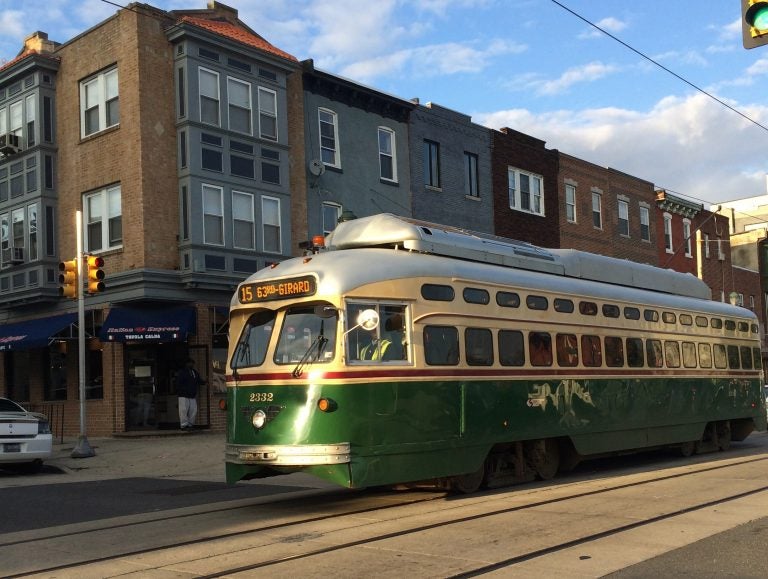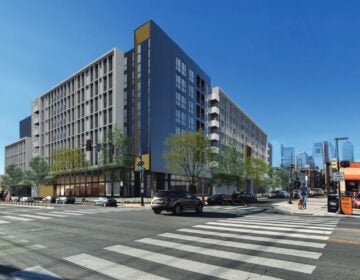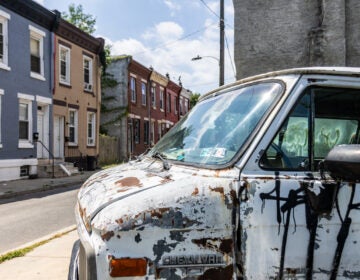Philly Council limits development on growing Girard Avenue
Philly Council President Darrell Clarke sponsored the bill, citing quality-of-life concerns from residents of the Yorktown and West Poplar neighborhoods.

SEPTA's Route 15 trolley. (PlanPhilly)
Amid last-minute bills passed during City Council’s final session of the season were a string of zoning restrictions, including a height restriction for development along a large swath of Girard Avenue.
A major thoroughfare that starts in West Philadelphia and runs eight miles past Fairmount Park and the Philadelphia Zoo through North Philadelphia and Fishtown, Girard Avenue contains a surface trolley line and six lanes of traffic, intersecting with both the Broad Street Subway and the Market-Frankford elevated line. Its proximity to transit and regional destinations has made the avenue attractive to builders proposing housing and mixed-use development. Under the new legislation approved Thursday, new building heights between 2nd and Broad streets would be capped at 38 feet — about the height of a conventional, three-story rowhouse.
Joe Grace, a spokesperson for bill sponsor and Council President Darrell Clarke, said no single group had requested the legislation, but that it came in response “to recent community concerns” about development.
“The Council President wants to control density along the corridor to protect historic neighborhoods like Yorktown and West Poplar that are adjacent to Girard Ave,” Grace said.
The bill, opposed by the City Planning Commission, which has worked to promote transit-oriented development, passed Council unanimously. The bill reflects a trend seen over the last year as legislators have used their power to limit development of larger, multi-family developments. One critic, Daniel Trubman from the group Fifth Square, compared it to a bill limiting building height and Society Hill that Mayor Jim Kenney tried to stop with a veto overruled by Council.
“Smart cities are encouraging transit ridership by facilitating development along transit corridors. Philadelphia shouldn’t do the opposite,” Trubman said.
Grace countered that the bill was meant to avoid quality-of-life issues in the nearby areas.
“Too much density along the corridors impacts quality of life for the adjacent neighborhoods that are full of single-family homes and long-term residents with traffic and trash,” Grace said.
“Another aspect of the rezoning … was to make sure there [aren’t] any residential-only uses allowed along Girard. One big concern the community has is the preservation of commercial uses that they utilize as near neighbors.”
But Trubman said the response was part of what he described as overly broad uses of the term “historic” to provide cover for downzoning efforts. While Yorktown is an example of mid-century planned development, West Poplar was largely redeveloped by the Philadelphia Public Housing Authority into quasi-suburban single-family homes in the late 1990s. Much of Girard Avenue itself was also redeveloped over the years, and several portions of the overlay include strip malls and drive-thru fast food outlets.
Trubman said failing to upzone Girard would inevitably push housing demand into the areas the height restriction was meant to protect.
“The strategy in every other Philadelphia neighborhood has been to upzone the major avenues. By downzoning everything, there will just be more impetus to buy and flip the individual houses.”

Subscribe to PlanPhilly
WHYY is your source for fact-based, in-depth journalism and information. As a nonprofit organization, we rely on financial support from readers like you. Please give today.








